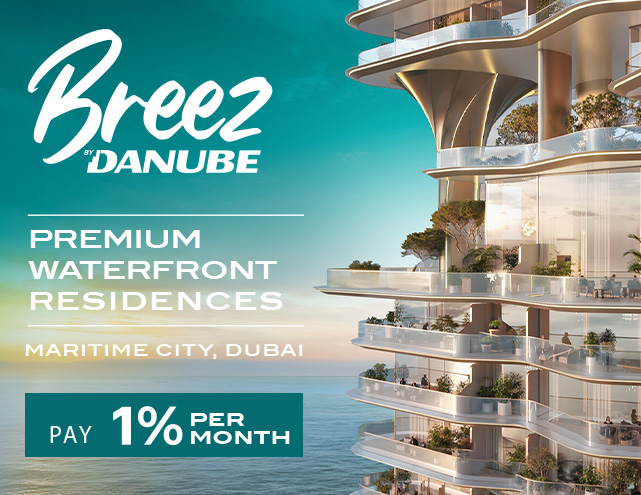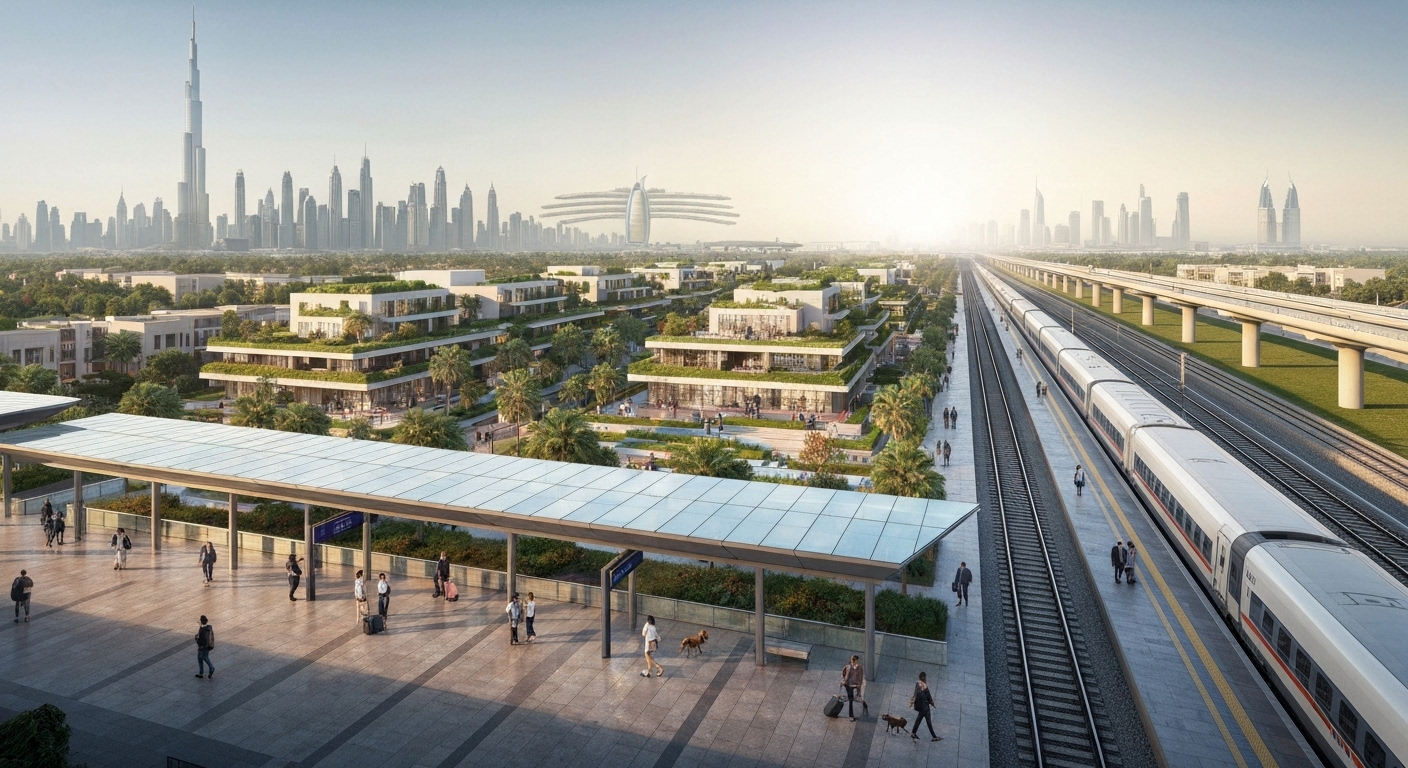Dubai’s real estate landscape is on the brink of a transformative era, and at the core of this momentum is the landmark Etihad Rail project. For real estate investors, prospective homeowners, and agents seeking the next prime opportunity, understanding the direct and indirect impact of the Etihad Rail is essential. Much more than a connectivity upgrade, its launch is poised to redefine values, demand, and economic vibrancy across Dubai.
The Etihad Rail Project: A Game-Changer for UAE Connectivity and Beyond
The Etihad Rail is the largest infrastructure initiative in the UAE’s recent history, aiming to seamlessly connect all seven emirates and, by extension, link the country to the greater GCC region. Its high-speed, world-class transportation network will facilitate swifter movement of people and goods, establishing new commuter patterns and economic corridors.
This level of nationwide connectivity stands to democratize access not only within Dubai but also in Abu Dhabi, Sharjah, and key commercial hubs. For investors, this positions the rail as much more than a mobility project; it’s a blueprint for new growth, convenience, and sustainable urban expansion.
Understanding the Direct Impact on Dubai’s Real Estate Landscape
Dubai has always thrived on infrastructure-led growth. With the Etihad Rail’s impending operation, several property market fundamentals are set for significant shifts:
Accessibility:
Commute times to business districts, airports, and coastal areas will shrink considerably, elevating the appeal of both established and emerging neighborhoods.
Increased Demand:
Enhanced transportation typically results in higher buyer and tenant demand, especially for zones strategically linked to major stations.
Market Resilience:
Despite global uncertainty, Dubai’s real estate remains robust, driven by transparent regulations, strong demand, and investor-friendly incentives, now further strengthened by the promise of rail connectivity.
Attractive ROI:
Robust demand and improved market efficiency see rental yields in Dubai ranging from 6% to 12%, varying by property type and location. The upcoming rail network is expected to push these yields higher, especially in newly connected zones.
Key Impact Zones: Where to Invest Before 2025
To maximize returns, investors must focus on the primary beneficiaries of the Etihad Rail, notably:
- Areas near major Etihad Rail stations — These will become new residential and commercial hotspots, with property values expected to rise sharply. According to Gulf News, properties near upcoming Etihad Rail stations in Dubai South, Al Furjan, and Jumeirah Village Circle are already showing strong signs of change and growth, positioning them as prime opportunities for investors.
- Commuter districts — Neighborhoods previously perceived as “on the fringe” will find renewed value due to improved, rapid access to business and leisure centers.
- Integrated developments — Projects combining retail, residential, and green spaces, particularly those aligned with developers focusing on strategic locations near transport links, stand to benefit from surging demand.
Property Value Appreciation and Rental Yield Forecasts Post-Launch
The ripple effect of the Etihad Rail is not just anticipated, it’s already being priced in by savvy investors. Projections for 2025 are highly optimistic:
- Capital Growth: Zones along the rail corridor could see property value appreciation outpace the wider Dubai average, especially as infrastructure milestones are achieved. Industry experts confirm that properties along the Etihad Rail route have already seen up to 25% increases in value, according to leading local real estate insights from LuxLiving.
- Rental Yields: Post-launch, annual yields in proximity to major stations are forecasted to approach or exceed the upper range (10-12%), supported by increased professional and family tenant demand.
- Resale Liquidity: Properties in these zones are expected to enjoy superior liquidity, as commuting convenience and lifestyle amenities draw both buyers and long-term renters.
Beyond Connectivity: Additional Economic Benefits for Dubai Real Estate
The benefits of the Etihad Rail extend beyond faster journeys:
Population Growth:
Improved access encourages both local and international migration, bolstering resident numbers and market depth.
Business Expansion:
Improved logistics and workforce mobility support commercial growth, boosting demand for offices and retail, and by extension, nearby residential units.
Lifestyle Transformation:
Integrated neighborhoods offering amenities from health clubs to co-working spaces become magnets for a globally mobile, lifestyle-focused population.
Strategic Locations Aligned with Etihad Rail’s Potential
Developments strategically located near upcoming transport links are expected to unlock superior growth potential.
- Investor Advantages: Properties in prime zones may qualify for long-term residency options, including Golden Visa eligibility (subject to government approval) for qualifying investments above AED 2 million.
- Market Response: New launches in well-positioned areas often experience strong demand, aligning with infrastructure-led growth expectations.
Making an Informed Investment: Your Next Steps in Dubai’s Evolving Market
In an environment defined by change, securing a stake in Dubai’s future means acting before infrastructural upgrades are fully realized. Here’s what savvy investors should do now:
- Evaluate proximity — Choose developments aligned with key rail stations and urban expansion corridors.
- Consider hybrid projects — Integrated communities with amenities and business support attract robust rental and resale prospects.
- Leverage incentives — Explore long-term residency options and tailored payment plans offered by experienced developers.
- Stay updated — Monitor project timelines, rental yield forecasts, and infrastructure milestones targeting maximum appreciation.
Dubai’s evolution as a global destination is accelerating, and with Etihad Rail, the city ushers in an era where convenience, growth, and connectivity intersect. Whether your aim is capital growth, lifestyle security, or both, aligning your property portfolio with developers strategically positioned near the rail and key urban hubs can help you benefit from every mile of progress.




